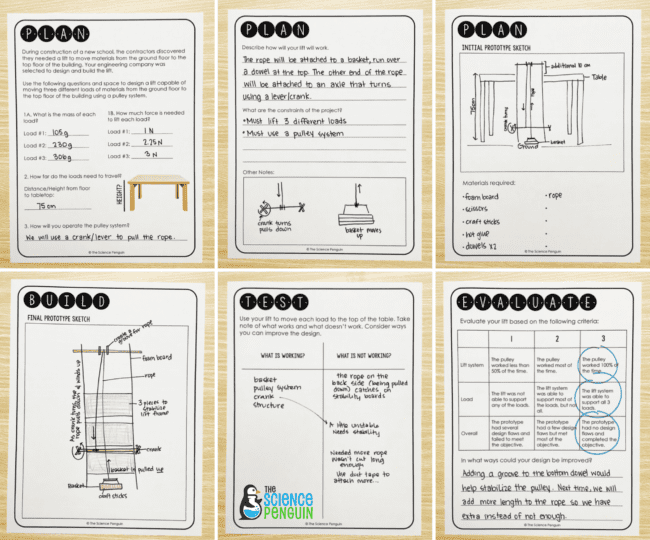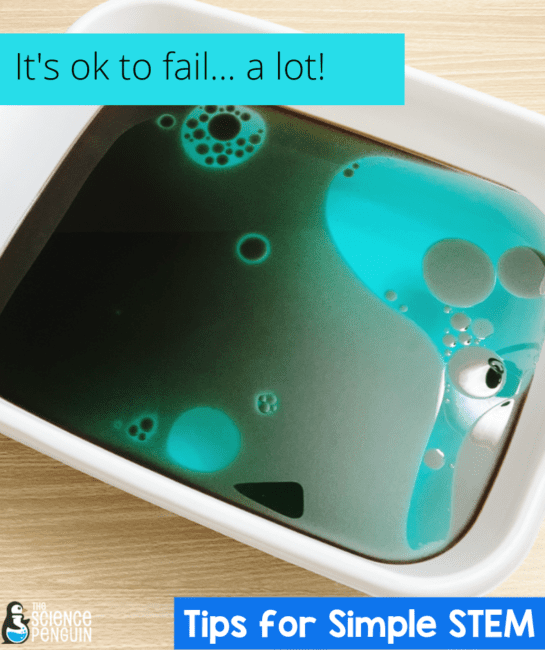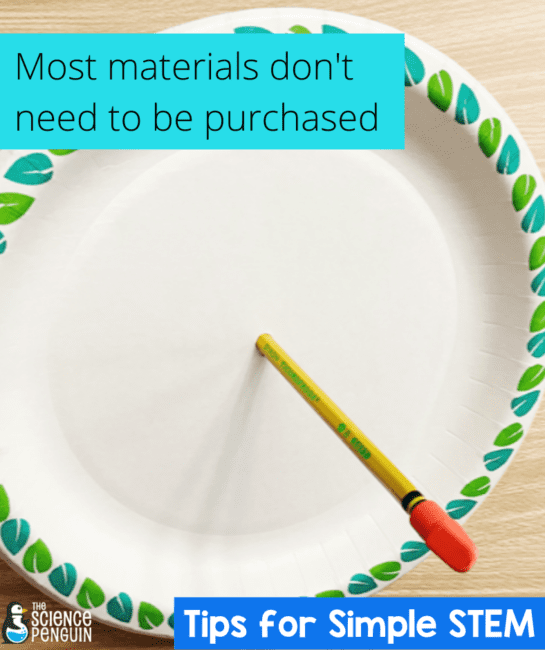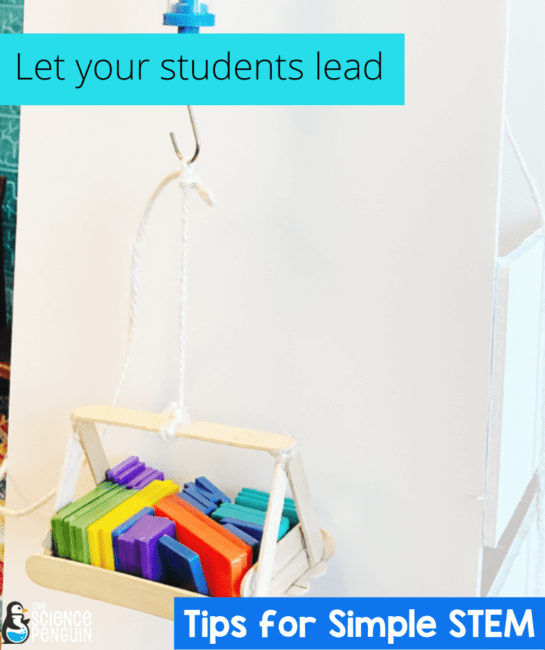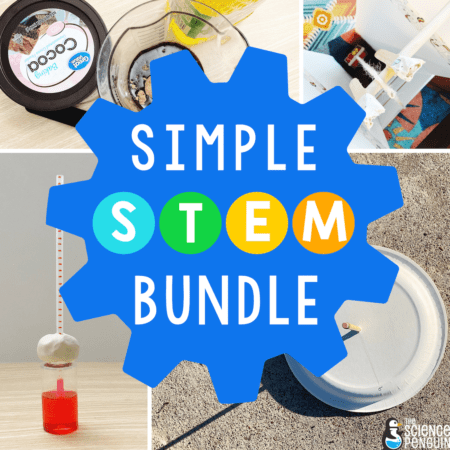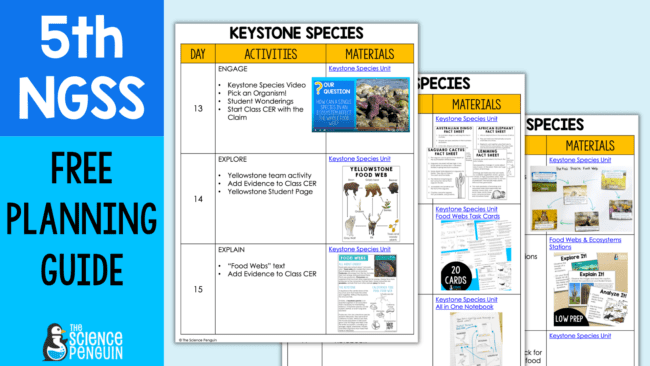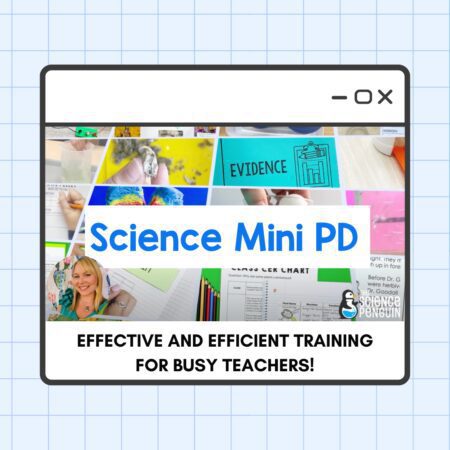
Starting a STEM program, or teaching STEM for the first time can be overwhelming!
There are so many factors to consider and pieces to organize. I found the greatest frustration came from money. For the first 3 years I taught STEM, my budget was ZERO- which made getting materials challenging. Very quickly I realized that the resources I wanted could easily be acquired through donations and my local recycling center.
Our school cafeteria even got on board and set up donation boxes for empty water bottles, lids, cardboard tubes, and soda can tabs. Once I was past my hurdle of needing materials, the rest didn’t seem so challenging.
This post includes:
- 4 questions I ask myself before starting a unit
- 3 tips for successful STEM
- Simple STEM recommendations
4 Questions I Ask Myself
1. What is the goal of this project/unit?
There is often a fine line between STEM and crafts. I wanted to make sure that my students were not just making something that looked cool, but rather designing with purpose. Even though I had an outcome in my head, my goal was to facilitate their learning through discussion, brainstorming, designing, success and failure, evaluation, and extension.
2. Will the students be engaged?
My students ranged from 5th grade to 8th grade which made engagement tricky! What seemed exciting to a 5th grader was often NOT to a 7th or 8th grader. However, if I was hyped up, then they got excited.
More importantly, the excitement came from having fewer restrictions. Students had the opportunity to test their ideas, try non-traditional approaches, and make their own decisions. I was there to simply facilitate and be a sounding board for ideas and frustrations.
3. How much time do I have for this project/unit?
I was lucky, I set the pace for all our projects. If we needed more time, I just added more time. I set small deadlines within the project for students to check in with me as far as planning and progress, but the time given to the entire project was mine to manipulate. The teams communicated with me daily about where they were and how long they anticipated a step taking them. I planned for a certain amount of time, but their communication made it easy for me to determine when we would actually finish.
4. How am I connecting to their current curriculum AND real life?
Every project I presented connected to their current curriculum or content they had recently covered. This helped with two things: team management and helping students see how their learning looks in “real life.”
Teams were responsible for nominating a lead engineer. This was the go-to person for content questions and problem-solving. The lead engineer also reported to me. Surprisingly, it was not always the 8th grader who was chosen! They worked on the problem as engineers would, but they also took a deep dive into the standards they were learning about in order to better understand how to solve the problem. Also, it answered the question, “When am I ever going to need this?”
3 Tips for Successful STEM
It’s ok to fail… a lot!
Part of the engineering process, and part of learning, is failing first. We discover more about an idea, a concept, and how things work when we learn how they don’t work. These failures take students deeper into the how and why. Remind students that engineering is a never-ending process of failing forward.
Most materials don’t need to be purchased.
When you have a zero-dollar budget, you are forced to get creative. I saved water bottle lids, cardboard, plastic bottles, and other materials from daily use. I reached out to our local recycling center when I needed milk jugs, aluminum cans, and cardboard. My students and their families donated play dough, craft materials, and even orthodontic wax! This allowed me to use any funds I did receive for items that NEEDED to be purchased.
Let your students lead.
As teachers, we are used to guiding students to the outcome. In STEM, we cannot always anticipate the outcome nor should we. STEM is about discovery and more often than not, the students find their way. STEM encourages learners to make connections and discoveries naturally. Provide the task, provide access to materials, and then take a step back! Your job is to facilitate and advocate!
Simplifying STEM
Simple STEM makes STEM…SIMPLE!
We at The Science Penguin made STEM resources to simplify the process. Here’s why you will love them:
- Use common materials that you can find in your classroom or are easy to acquire
- Teacher guides make it easy to plan and navigate
- Example photos are included
- Student pages and samples are included
- Aligned to 5th grade NGSS (Next Generation Science Standards) and the upcoming TEKS change
Thanks for stopping by The Science Penguin. Have STEM-tastic day!
Ashlee, Team Science Penguin


